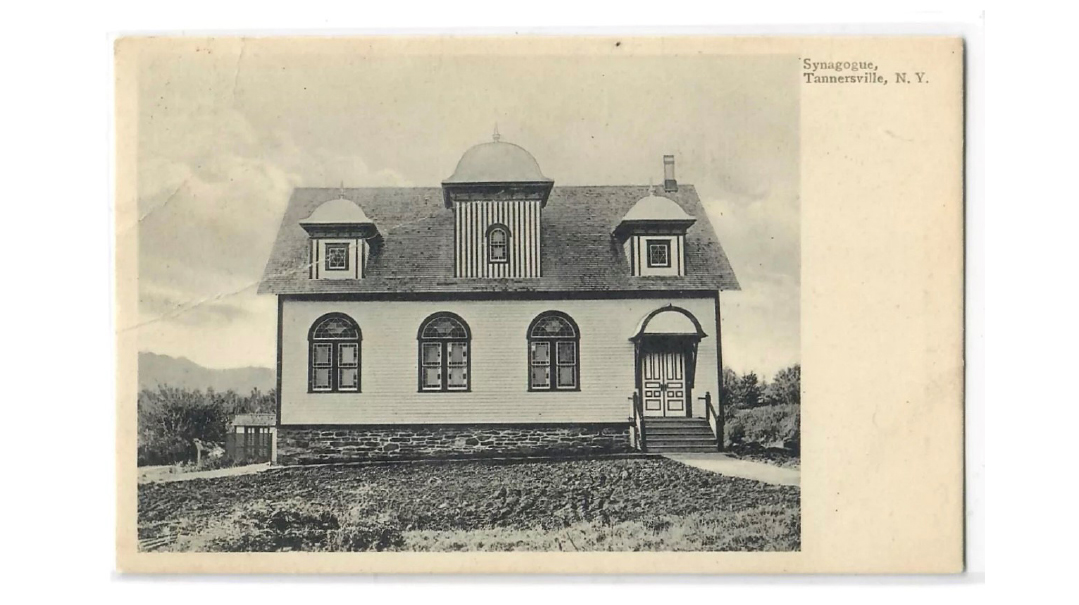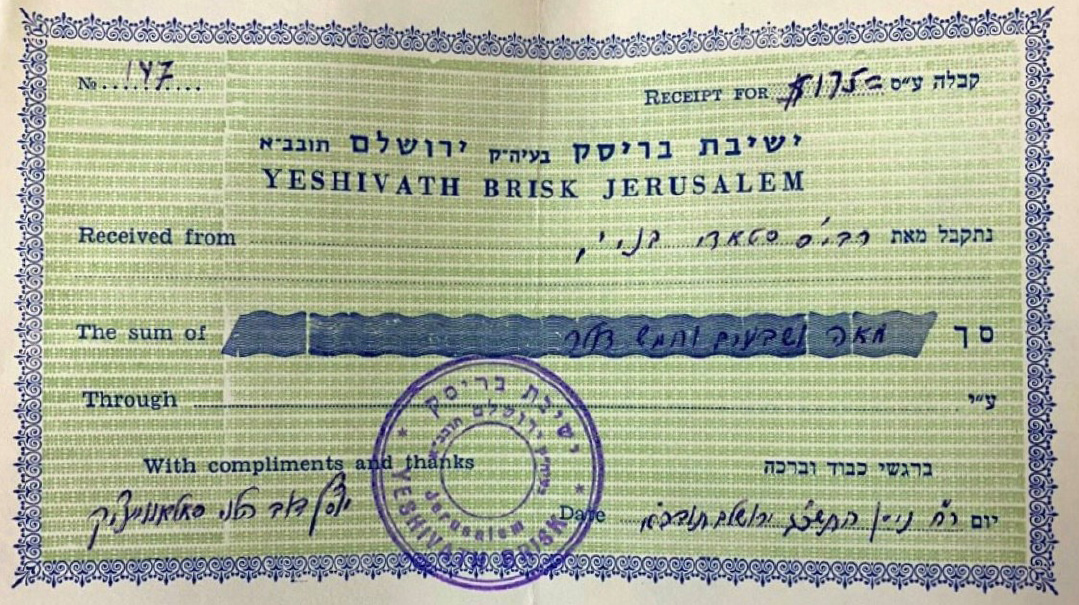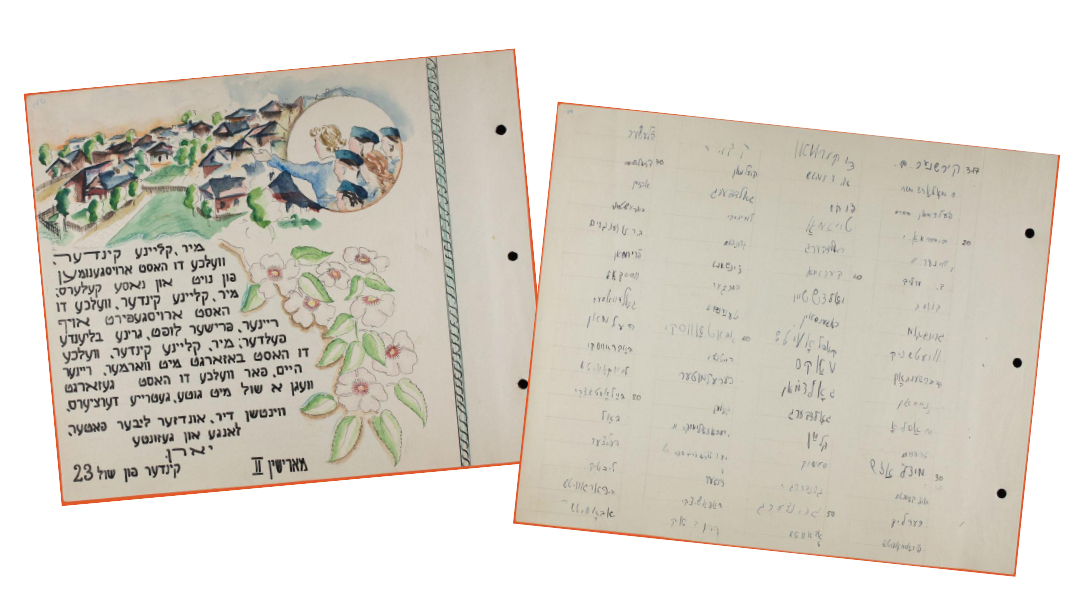Summers at Tannersville
| August 14, 2024The Jewish response was simple: We’ll make our own hotels for Jewish vacationers

Title: Summers at Tannersville
Location: Tannersville, New York
And concerning the Anshei Hashoron, he [the Kohein Gadol] would say: May it be Your will Hashem, our G-d and the G-d of our forefathers, that their homes not become their graves.
—Mussaf of Yom Kippur
AT
the holiest moment of the year, the Kohein Gadol would utter a supplication for the homes of the “Anshei Hashoron” that they be long-lasting, the construction be permanent, and those who reside in them flourish.
In 1899, an Orthodox shul was established in Tannersville, New York, named Anshei Hashoron. In 1912 it moved into quarters on Tompkins Street, where it has remained ever since. The shul and community have been in continuous service since the turn of the century, a living expression of permanence, continuity, and eternity. The building is a silent testimony to the answer of the Kohein Gadol’s prayer. Anshei Hashoron is here to stay.
Nestled in the Catskill Mountains, Tannersville is famous today mainly as a summer resort. The tanneries that gave the town its name had taken a downturn by the mid-19th century, but the arrival of the railroad in the 1880s, at the peak of America’s Gilded Age, gave the upstate New York town a new lease on life. New Yorkers seeking escape from the sweltering city during the summer months could easily take the railroad and enjoy the wide-open country and fresh air of the Catskills.
Many resorts and summer hotels in the late 19th and early 20th centuries had policies that discriminated against Jewish clientele. These establishments publicly advertised their restrictions: “No Hebrews or consumptives accepted,” “Gentiles only,” and “Christian clientele only.” The Jewish response was simple: We’ll make our own hotels for Jewish vacationers. A Rand McNally travel guide to the Hudson River from the 1890s states that Tannersville is “a great resort of our Israelite brethren.”
A recent 2022 historical profile in the Washington Post described the origins of the Jewish summer resort business:
The Jewish Vacation Guide, first published around 1916, compiled addresses, alongside a whole network of Jewish-owned or Jewish-friendly places where it was safe for Jews to eat, sleep, and visit. This guide, and other travel advice like it published in the Yiddish press, served as a vital tool in navigating the potential danger of Jewish travel in early America. It even went on to inspire the “Green Book,” a widely used guide for Black travelers. In the introduction to his Negro Motorist Green Book, Victor Hugo Green credited Jewish guides for serving as a template for his book, noting that “the Jewish press” had “long printed information about places that are restricted.”
The Jewish Vacation Guide connected Jews to a network of places that did not just tolerate, but welcomed them. Dozens of the listings touted kosher meals, often made with farm-fresh butter and eggs. The conditions at some of the rented rooms were far from luxurious, but they made up for modest offerings in hospitality and affordability.
One farmhouse advertisement promised: “You will be made to feel at home.” The majority of the listings were written in Yiddish, given that many Jewish Americans were immigrants or the children of immigrants whose primary language was Yiddish.
When Jewish farmers realized this could be a lucrative prospect, they began re-creating their own houses as boarding houses, or even building extra houses on their properties. The vacation guide itself was published by the Federation of Jewish Farmers of America.
The culture that evolved from these early resort hotels and communities, later colloquially known as the Borscht Belt, was to serve a traditional customer base. Hotels advertised shuls on their premises, as well as kosher kitchens, a heimish atmosphere, and in the case of Anshei Hashoron in Tannersville, a mikveh.
At Tannersville’s peak as a Jewish resort, there were more than 65 boarding houses and hotels, drawing more than 40,000 summer visitors annually. Mark Twain vacationed there, and wrote about his interactions with the Jewish boarders he met during his stay. Nathan Strauss, the famed Jewish philanthropist and owner of Macy’s, also spent his summers there. The Jewish Theological Seminary (which was still nominally Orthodox in the early 1900s) and the American Federation of Zionists held their annual conventions in Tannersville.
A prominent postwar summertime resident of Tannersville was Rav Joseph Breuer of KAJ, who for decades found the convivial atmosphere and picturesque scenery a much-needed break from his pressing responsibilities at the helm of his Washington Heights community.
Rav Breuer’s biography relates how the experience of having the rav in their midst affected the Tannersville community:
Rav Yechezkal Spitzer, who served as rav of the summer community in Tannersville, recalls the unique experience of having Rav Breuer as a congregant [in the Anshei Hashoron shul]: “He absolutely refused to sit in the front row of the shul, reminding everyone present that ‘here I am a balabos just like everyone else.’
“But the special aura of his presence in the shul was always felt. I remember very clearly the time when a Conservative leader came to shul to make an appeal for Eretz Yisrael. From outside appearances, you would have thought nothing, for he even davened with his tallis over his head. But when he began to speak, everyone in shul could hear Rav Breuer murmuring his disapproval. As he continued, Rav Breuer removed his tallis and left the shul. It was a tremendous lesson to all present in the true meaning of integrity. Nothing could compromise his devotion to emes.”
He enjoyed the tranquility of the surroundings; walking along the paths of the gentle green hills, later sitting on the porch of his daughter and son-in-law’s home with a sefer in hand, occasionally looking to watch his grandchildren as they played ball with their friends.
Another longtime Tannersville summer vacationer, Rav Hershel Schachter, once witnessed Rav Breuer finish all of Maseches Chullin with several bochurim over the course of the summer, making a beautiful siyum to celebrate their summer vacation accomplishment. This was toward the end of Rav Breuer’s life, when he was nearly blind, studying the Gemara from memory.
(Originally featured in Mishpacha, Issue 1024)
Oops! We could not locate your form.






